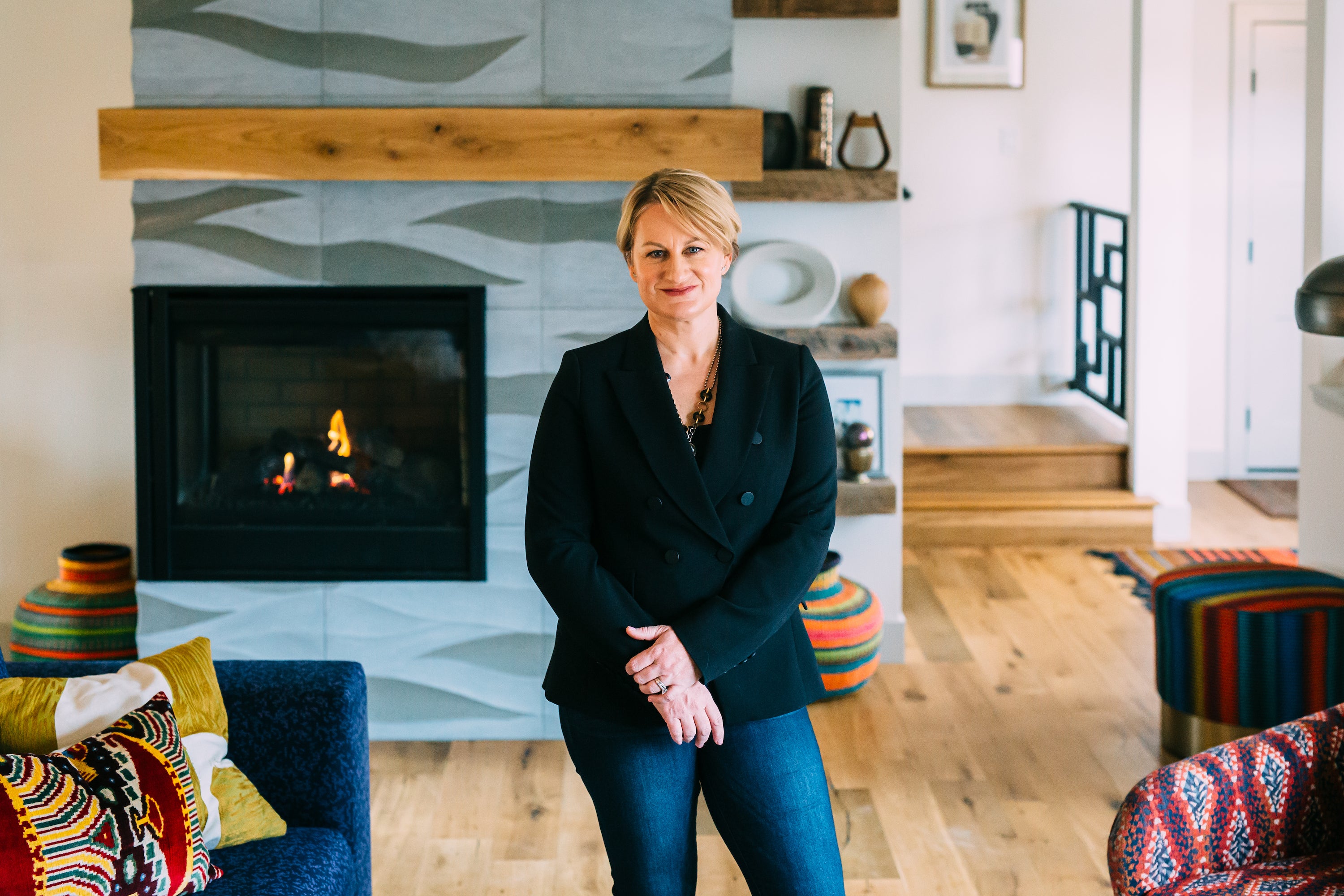The 50 States Project is a series of candid conversations with interior designers across the country about how they’ve built their businesses. This week, Denver-based designer Katie Schroder of Atelier Interior Design tells us where she invested to get her firm off the ground, why she likes to wait to be friends with clients, and why she’s raising her hourly rate instead of her markup to grow her firm’s profit.
What are some of your earliest memories of being drawn to design?
When I was growing up, my mom and my grandmother who lived close to us both worked with an interior designer. His name was Ed, and whenever Ed would send fabric swatches or wallpaper, I was always like, “What do you have there?” So I knew about the world of design, but never, ever thought that I was going to go into it.
In college, I studied behavioral science and political science. While I was in school, I worked at a Pottery Barn, and was like, “You can have a job doing this?” But I didn’t have confidence I could do it myself. After I graduated, I got a job at a local design center, and I worked there for five or six years. I met hundreds of designers there—I was talking to designers who worked at large firms, or owned large firms, or were by themselves, or had one or two employees. I met commercial designers and residential designers; colorful designers and designers that preferred more neutrals. I asked a lot of questions and was curious.
Did that get you thinking that maybe you could do it, too?
For sure. Designers would ask me to put fabric schemes together and pull furniture for them—not necessarily to do their jobs, but because I had worked there so many years. It was also fun to have clients come in, and I learned a lot from seeing how designers and clients work together. While I was there, I went back to school—we have a junior college with an interior design program nearby, and I was like, “I’m just going to go try out this program to see if it’s a good match.” And it was. My mom had me do her house, and then I did some of her friends’ houses as well. That’s when I was really like, “Wait, I can do this.” It was a slow build.
How did you pivot from design center to designer?
A local designer approached me and asked if I’d like to come work for her, and I took a leap. At that point, I had started design school while I was working, and I worked for her for a year and a half. I don’t want to divulge too much about what happened after that, but basically she wanted me to become a partner in her firm—and give her a large sum of money to buy in. I was barely 30, and I was like, “I don’t have the money for a partnership.” Then she got her business evaluated, and she realized the value of her company wasn’t where she thought it was. At that point, it was like, “Well, it seems like we’re parting ways.” And I thought to myself, “You know, I can do this by myself.”
Where did the first client come from?
It was a client I had been working with at that design firm. When I left, the designer obviously didn’t want me to take any of her clients, and I get that. I said I wouldn’t, but ultimately one of the clients did come with me, and that job helped me launch the company. When you start an interior design company, you need to come out with amazing photography and a killer website—social media wasn’t really even around then. You need to come out looking like you know exactly what you’re doing so clients have the confidence to hire you.
So you invested in those things after that first project?
Yes. I think the most important thing is to invest money in your website and photography. I even got pictures of my own house and my mom’s house to post online. Nobody needs to know it was mine—having photos of your work can really just help people know they can trust you to remodel their home. I also did a hair salon for a friend—I basically almost did it for free because I was like, “This is a killer start.” That way, I could have great imagery of commercial projects as well, which led to jobs at hair salons and spas. It helped launch me.
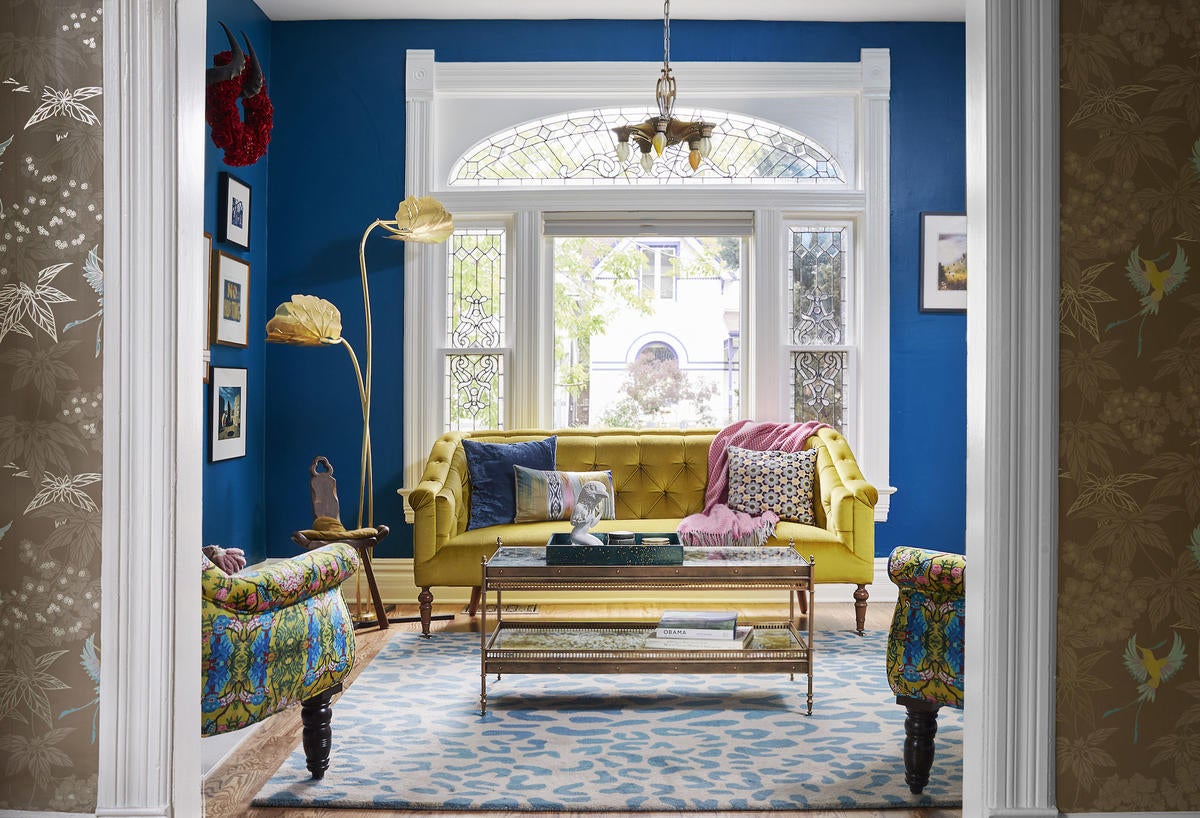
How has your business grown, and what does your team look like today?
I have three employees—well, technically, three and a half, with the bookkeeper. One does business development. She helps with [HR-related stuff] like making sure we have health insurance for employees and all the payroll, and then she also does order placement, freight, damages and all that kind of stuff. And then I divide my clientele in half, and have two design assistants who split up the projects and stick with the client from the beginning to the end. That way, the client feels like they have a relationship with somebody other than me, because I’m not always reachable.
How many projects are you typically working on at one time?
Usually 25. I probably have 30 or 32 right now because of the pandemic. You have to figure out that balance of, OK, projects are going to take twice as long as they should—how do I keep money coming in and not get too busy at the same moment.
How hands-on are you with each project, and where do clients see you versus where do they interact with that design assistant?
I believe that if you’re going to hire me for the Atelier look, I need to be there. I’m there for 95 percent of design meetings and I make about 75 percent of the decisions behind the scenes. That said, I want my design assistants to have creative freedom and come to me with ideas. I want them to feel like they have some control, too.
How do clients find you these days?
It’s all referrals, social media and the website. Things like Houzz used to be big 10 years ago, but I’ve been disappointed in those services and I’ve pulled my name.
Social media, especially, is picking up lately. I just hired a marketing firm to do my social media full-time, and that’s really improved traction—and people calling. Whether or not it generates amazing leads, I don’t know. We hear from a lot of people who don’t have the budget or don’t quite understand what interior designers do, so there’s a lot of education. That’s the other thing my business development person does for me: she calls leads and has that initial conversation with people. I used to call my own leads back and talk to them to understand if they were a good fit, but now it creates too much stress in my day.
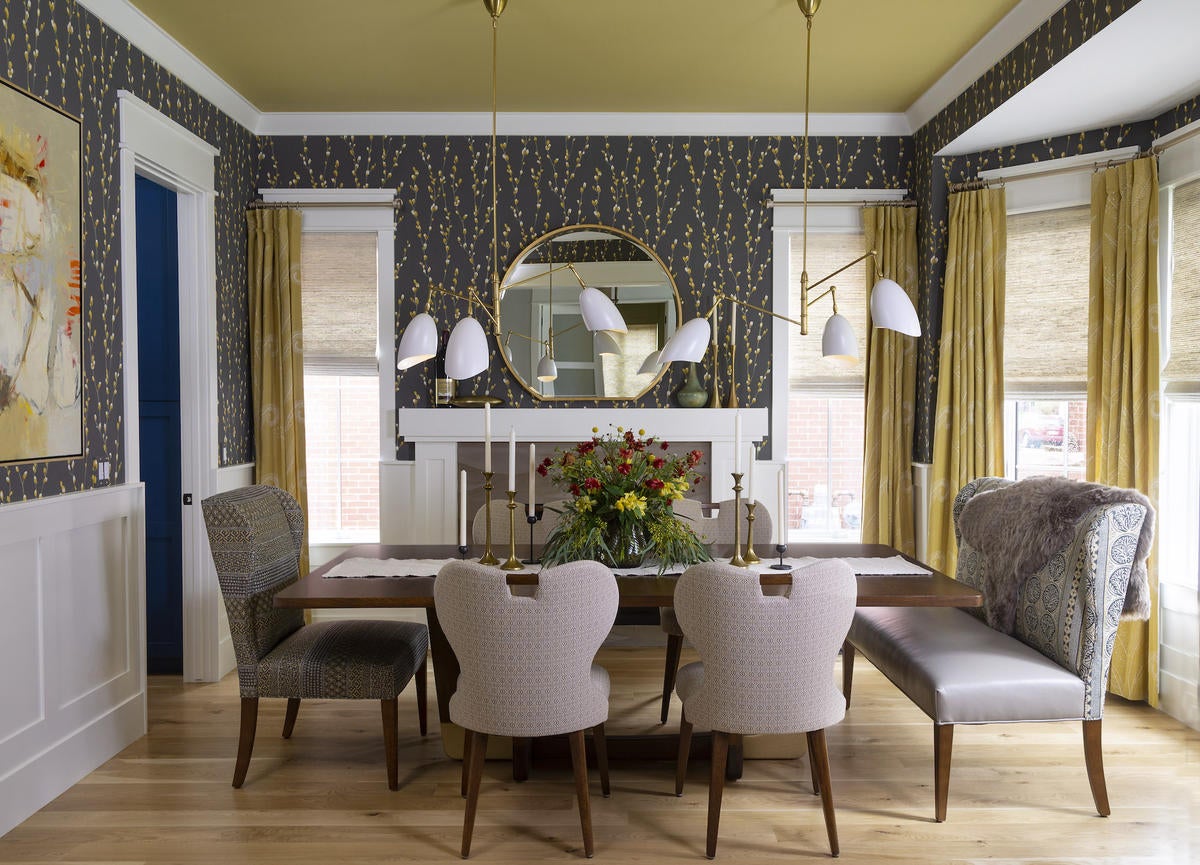
How have you approached billing for your work over time?
It hasn’t changed terribly. I charge hourly, and then I also charge a markup on goods. Mine is 25 percent—I know some designers do 35 percent or more, but I’m not a big fan of that. I’d rather increase my hourly, because it’s really me and my aesthetic clients are after. That’s how I increase my rates: It’s about the cost of my time going up.
Are you billing for the order placement time and your design assistants’ time as well, or is that all covered by the markup?
This is my line: I charge for everything that moves the project forward. So sourcing, pricing, proposal writing—I charge the same rate. I used to do an admin rate and then a designer rate, but it gets too complicated and I feel like if you’re paying for me, you’re paying for me across the board. I mean, I used to do all of those things myself, so why does that matter?
When I approach a job, I meet the clients and then I come up with how many design hours I think it will take to achieve their goals. I will tell them, “I think it’ll be around 100 hours”—or whatever it is—and then I usually give a range so I don’t get locked into anything. But I also tell them, “This is also dependent on how decisive you are and how quickly our project moves forward, because if you’re really indecisive, it’s going to take me longer.”
You’ve got someone vetting leads, but then you’re going out and meeting clients and seeing their space. How are you deciding these days what you say yes to?
To be candid, I got a little screwed last year because I was saying yes to too much. I was saying yes to friends, and friends of friends, and I was accepting a lot of small projects. I don’t know if I was afraid of where the market was going to go, or if I just couldn’t say no because I like helping out. But I really did say yes to too much, and I got trapped with too many small projects mixed in with our large ones.
Small projects are just as much work as large projects, so this year—just in the last 90 days—I’ve been very conscious about saying no to quite a lot. I’m trying to protect my business, my employees and myself, and honestly, it has brought us more larger projects. I think when you put that out there in the universe that, no, I need to have limits—that’s when good things happen.
What are those limits for you?
I don’t accept projects under $50,000. And honestly, $50,000 doesn’t really do much anymore, so I should say more like $100,000. It’s so easy to feel snotty in this business and it’s a little hard for me internally, but you feel better in the end. You can’t do it all. When you’re just getting started, you have to take everything; now that I’ve been doing this for almost 25 years, those limits have evolved.
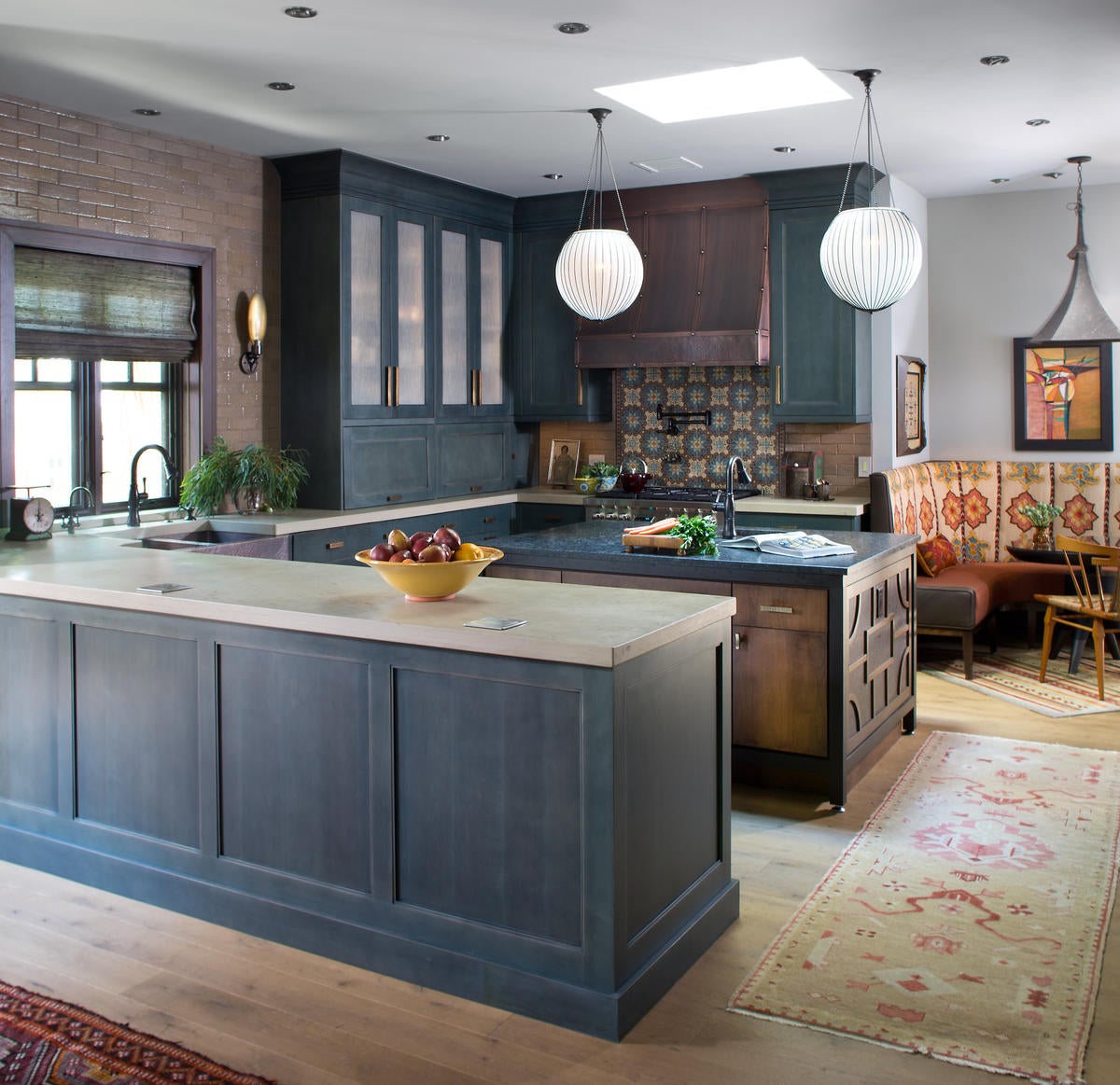
Can you tell me a little bit about the housing market in Denver?
I’m sure most places right now would probably say they’re booming, but Denver is really booming. Right now, I’ve got tons of clients who are moving here from New York or San Francisco.
It sometimes feels like everyone I know in New York has moved to Denver!
I know! I think they are craving that indoor-outdoor lifestyle we are lucky enough to have here. I can ski or river raft during the day and then go to an art gallery at night. The restaurant scene here is amazing. I’m one of those weirdos that likes it all: I want to go hiking and then go out to a fancy dinner. That lifestyle is really important to me, and that’s why I live here.
Are your clients looking for that in their homes too? How does that sensibility show up in the work you’re doing?
That lifestyle is serious, and we’re hard on our houses. Ninety percent of my clients are families. They have kids, and everybody has a dog, and everyone is in and out all day. You have to have a home that has a great mudroom to handle that. I use a lot of commercial-rated fabrics, and I do a ton of banquettes for families who pack lots of people into their house. Maybe there was more of that before COVID, but I think we’re going back.
It’s also a very dry climate, and you have to be aware of that in your designs. Things don’t work out here like they do in more humid places, and a lot of imported furniture doesn’t last. The veneers split, and a lot of inlays don’t hold up. You need to be mindful of what you’re ordering, and if it is more ornate, you may need to have a discussion with your client like, “Hey, this could fail.”
How do you shop with that in mind?
We source a lot through the Denver Design Center. Because I worked there, I really respect those relationships, and I think it’s important we keep that alive because a lot of other middle-country states don’t have design centers. Having a place like that where clients are able to go sit on things is really a luxury.
Honestly, CB2 is killing it, so I order from them. And then I have a lot of direct vendors and upholstery lines I order from where I know I can get better pricing. And then as far as cabinetry and things like that, I’m trying to source more that’s locally made because lead times are so out of control, and because it is nice to support local artisans.
Is there a big pool of craftspeople who can do that work for you?
There is, and it’s growing. I think more and more, locally sourced furniture, cabinetry and built-ins will be the way to go. It’s almost impossible to wait on out-of-state stuff, because it’s going to take forever, and then if there’s a problem with a door, you’re waiting 12 weeks more because you have to get in line all over again. If you’re working with someone locally, it’s a few weeks.
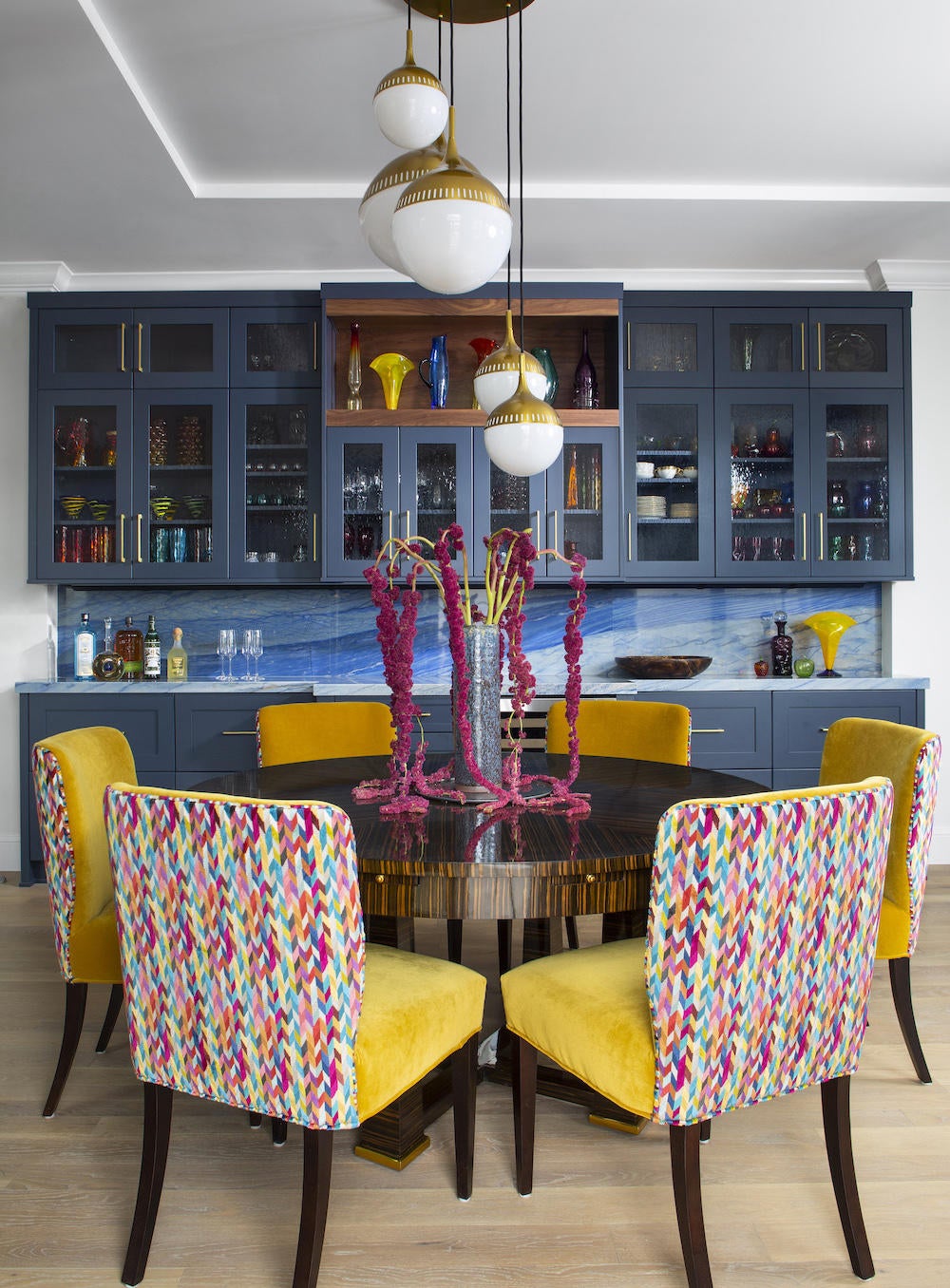
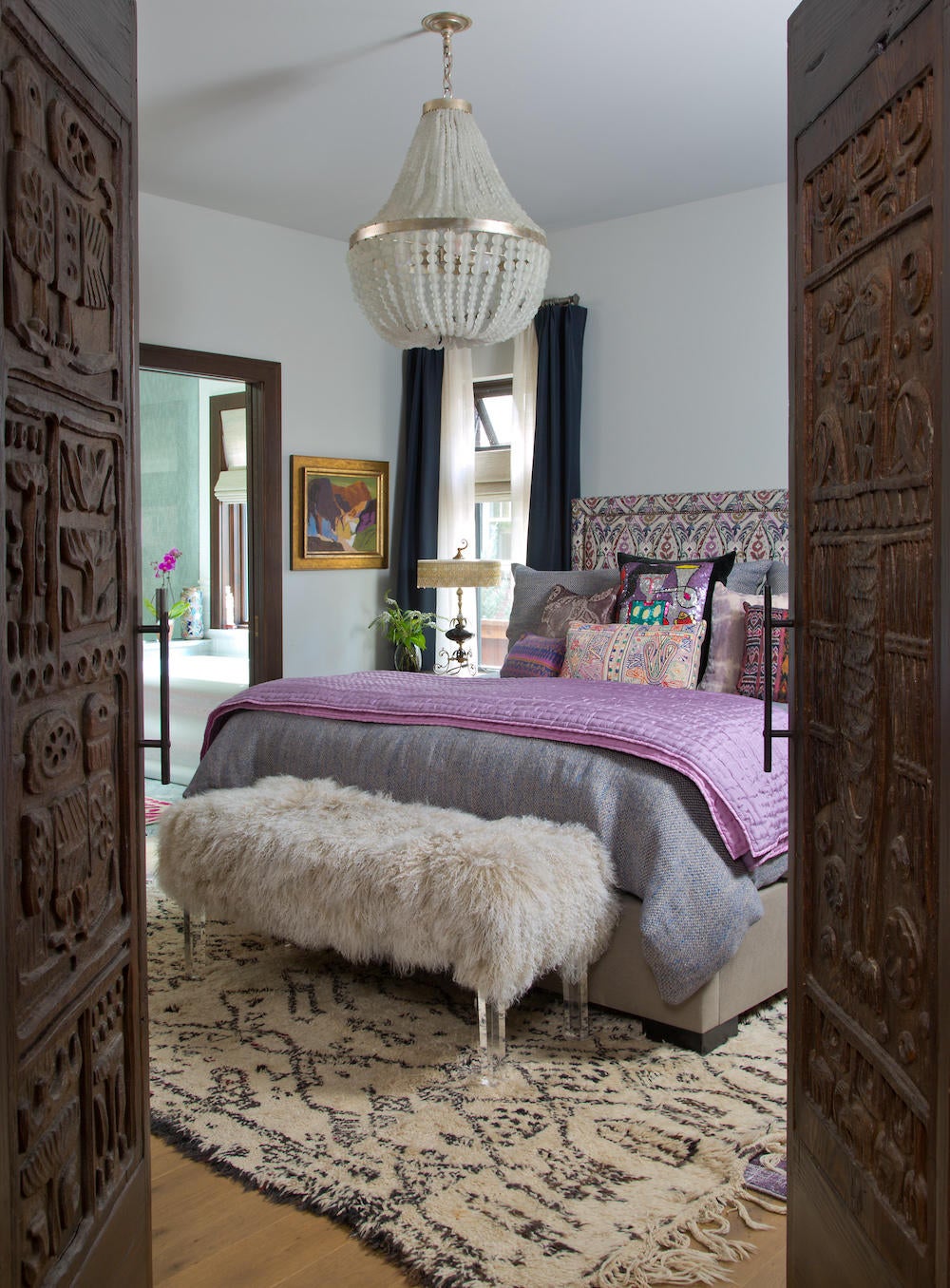
Your work is very colorful. Have you always designed that way, and how do you attract more clients who want that vision and style?
My parents and my grandmother love color, so I never really knew design without color growing up. I did projects from the beginning that had lots of color because that was my innate thought process. Neutrals are more challenging for me. Sometimes I’ll get people that hire me and want to do a really neutral palette, and it’s super fun because it’s not my normal wheelhouse, but I’d say 85 to 90 percent of my clients these days hire me because I am colorful and they want to be pushed.
Has that always been true?
It’s always been true, but I’d say it’s become more of a thing in the last five years. People are more comfortable with lots of crazy patterns and colors. Maximalism and that whole granny vibe—I can relate to that, and those are the types of homes comfortable to me. People who say, “We should get a neutral sofa and put colorful throw pillows on it”—I’m like, “No, if you like those red pants, you’re always going to wear them. It’s the same with a red couch. Don’t be so safe. If you like red, and you’ve liked it for 10 years, you’re not going to stray from it. So go for it.” I’m a friendly push.
Where do you see the most opportunity to grow or how do you want your business to grow?
I’m very comfortable where I’m at. I would be happy where I am at for the next 20 years. If I had to think of something I’d still like to try—I would love to do a boutique hotel. That would be a goal, but I’m happy.
That’s amazing. What’s the secret to that satisfaction?
People hire me because I’m fun to design a house with. And look, this should be a fun thing to do. If we’re going to remodel your house, or build you a brand new house, that should be a fun process for you, and you should be able to sit back and let me do my job.
How do you build that trust with a client from the beginning of a relationship?
It doesn’t come right away. It definitely is a learned process, especially if they have never worked with a designer. I tone myself down in the beginning and let people know that they can trust me, my vendors and my resources. I start slow in how I approach them, and then it morphs and suddenly I’m designing parties for them and they’re texting me, “Should I buy this dress?” I’m like, yes, buy the dress.
These sound like relationships that don’t ever end.
Now that I’m in my late 40s and hit the age bracket that my clients are, a lot of them turn into friendships. I don’t really encourage a friendship until the project is done, because I feel like we need [boundaries]. I am lighthearted, and I can be fun and silly, and I think people are comfortable with me faster. That’s probably where the trust comes from. We’re going to have challenging moments, we’re talking about big sums of money, and that’s natural. But the more they can become comfortable with me, the quicker the relationship progresses. That’s why I am careful about waiting to create those friendships—people sometimes want to be friends with me sooner than that, but I’m like, “No, we need to wait.”
Honestly, some projects are never done because we end up doing little things here and there, but I would say once the majority of the project is over, then I’ll be like, “OK, let’s go to dinner. Now’s the time.”
How did you get comfortable talking about money with clients?
It’s still a challenge, and I’m always learning. It’s been helpful to have a bookkeeper, and to have people on my team to send invoices, but I always have to chime in if something gets touchy because it’s my company.
It was harder in the beginning, but especially now that prices have gone up and up with COVID, you have to be so honest in the beginning and set expectations. I tell clients: “Look, everything is now 30 to 50 to 100 percent more than it was.” We need to have these open dialogues, because you don’t want to get through it and then be like, “Well, I’m sorry, your kitchen costs twice what I thought it was going to be.” That’s not OK.
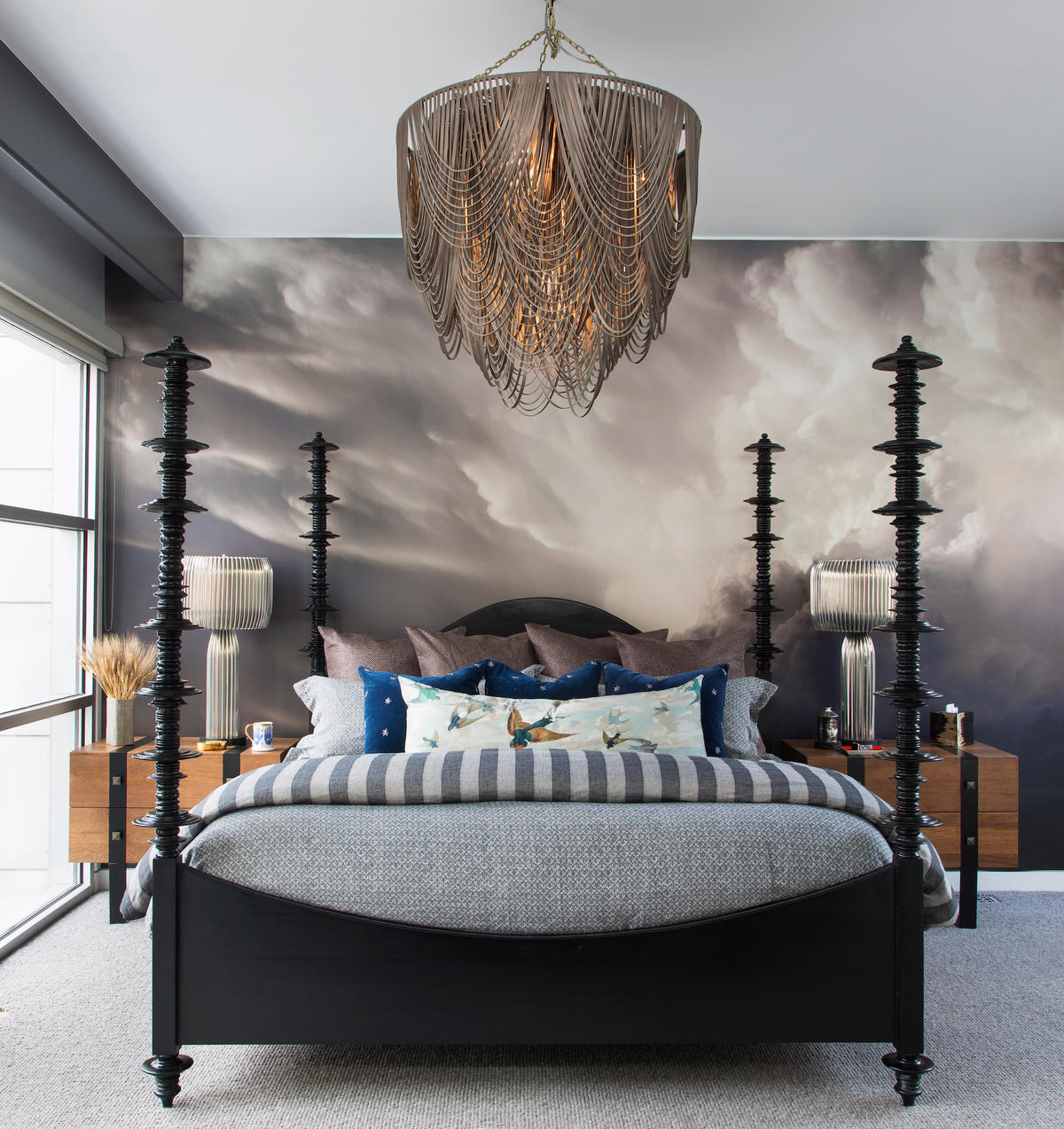
What is the biggest thing you know now that you wish you would’ve known when you started your company?
Just to charge more and be confident about it. It’s hard, what we do. We juggle so many things behind the scenes that nobody knows about, and you need to set your worth upfront and own it.
What does success look like for you?
Success looks like my company operates as a family, where we are laughing every day. It’s a firm attracting unique clients with their own perspective, and who are willing to trust us as well. If we’re talking about success personally, too, it’s being happy in what I do every day. It’s stressful, and I’m up at 2 o’clock in the morning worrying about whatever, but I have great support. I get a little teary talking about it because I don’t ever stop and think about it—you just keep going because that’s the job—but I truly love what I do, and I don’t think a lot of people can say that. My family supports me, and my family at work supports me. Success is creating a family in all directions—friends, family and work.
To learn more about Katie Schroder, visit her website or find her on Instagram.
















